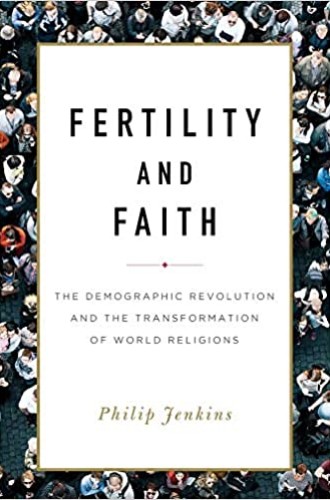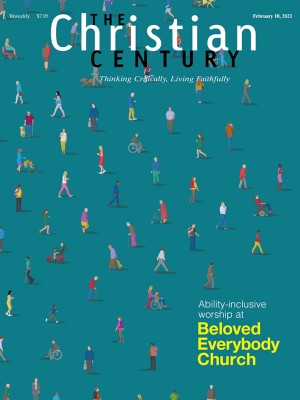What do fertility rates have to do with secularization?
A lot, says Philip Jenkins—but it’s not as simple as cause and effect.
Readers of American news outlets are familiar with headlines about declining fertility rates and about increasing secularization. But news stories rarely discuss either of these phenomena as a bellwether for the other, an oversight Philip Jenkins seeks to correct in his newest book.
Jenkins, who teaches history at Baylor University, is no stranger to the connection between demography and faith. His previous work on Christianity, which spans centuries and crosses the globe—including The Next Christendom, his 2002 book on the rapid expansion of Christianity in the Global South—makes appearances throughout Fertility and Faith.
Read our latest issue or browse back issues.
While Christianity is at the center of this book, Jenkins has broadened his scope to include other major world religions, moving at breakneck speed around the world to examine trends in Europe, Africa, the Middle East, and the United States. This wide lens allows Jenkins to come to a striking conclusion: “a direct relationship exists between the fertility rates of a community—the number of children that a typical woman bears during her lifetime—and that society’s degree of religious fervor and commitment.” Thus, he argues, “rapid changes” in fertility rates “should serve as an alarm bell about incipient secularization and the decline of institutional religion.”
Jenkins takes care to note that while secularization and a decline in fertility rates are indicative of each other, neither one necessarily causes the other. Rather, factors that affect one often lead to seismic shifts in the other. For example, Jenkins notes that demographic change often hinges on women’s access to education, employment, and contraception, which, in turn, are often contingent upon the ambient society’s attitudes toward religious doctrine related to women’s social roles.
In Jenkins’s view, demographic shifts influence everything from the popularity of various forms of religious devotion to the frequency with which religious rites of passage are celebrated in a given culture. Such shifts can radically change the face of religion—and, subsequently, the culture’s demographic makeup—for years to come.
It’s a compelling argument, and it comes with plenty of data to back it up. Most of the book is devoted to carefully documenting demographic patterns for the past century or so in each region, a tactic that allows Jenkins to track trends that affect secularization and fertility as they emerge. It’s a welcome change of pace from the tired approach of vaguely noting that millennials or “young people” are (or are not) attending religious services more often than their parents, that they ignore various faiths’ directives about contraception (or not), and that various institutions’ attempts to lure in fleeing congregants are (or are not) working.
Jenkins also attempts to offer some guidance for readers who may wonder what to do with the information he presents. I imagine this book being of real use to religious leaders who seek to better understand changes happening in their congregations, identify the underlying issues affecting their decisions, and entertain new perspectives on dealing with the consequences of those choices.
For all of its merits, however, Fertility and Faith also proves that it is possible to have too much of a good thing. Passages dedicated to the nuances of demography frequently turn into long digressions that add little to the argument. Jenkins is fond of including granular historical detail (for instance, that Italian women got the right to vote in 1945) while also glossing vast swaths of historical events, trends, and cultural norms in a sentence or two. Often this combination leads to statements that read as oddly contradictory. For example, he asserts without qualification that Orthodox Jewish women happily accept their role as prospective mothers to many children, after several pages (albeit pages dedicated to American Protestants) discussing the difficulty of publicly defying cultural norms. He presents these details as fact—as if he’d found them listed next to the fertility rates for Tel Aviv—without including challenges or endorsements from any women.
Perhaps my discomfort with these parts of Jenkins’s text comes from my own experience as a young American woman whose access to reproductive health care is often treated as a political bargaining chip, frequently in service to an interpretation of Christianity I do not share. Or perhaps it’s that I (and many other young people I’ve known) make reproductive decisions based less on cultural and religious mores than on limited access to health care and unreliable employment.
Jenkins occasionally gestures to these points, but it’s disquieting to see a topic that is often so intimate, so emotionally and culturally fraught, discussed through a detached historicized lens. While Jenkins did not set out to write a journalistic account that includes individuals’ personal perspectives, he does little to acknowledge the sensitive nature of the topic at hand, nor how much harm can be done to individuals in its name.
All of that said, Fertility and Faith remains an important contribution to the conversation about religion’s changing role in society, and one that those interested in demography or contemporary religious life would do well to engage with. I appreciate how Jenkins provides a useful lens through which to consider how deeply intertwined faith and fertility really are, and how strongly seemingly disparate events can affect one another. I look forward to seeing in what directions this work propels the conversation around secularization in the coming years.
This article was edited on February 17, 2021 to correct the publication date for The Next Christendom.







